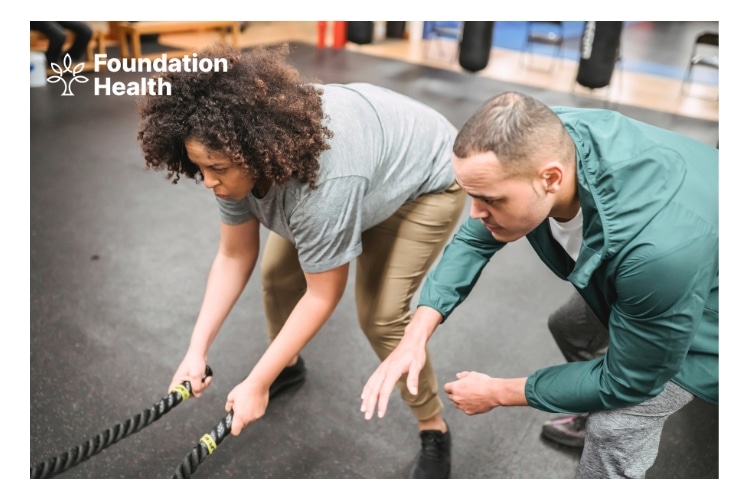Have you been inactive for a while and are now ready to get back into shape? Returning to fitness after a period of inactivity can be daunting, but with the right approach, it is achievable.
Life can sometimes get in the way, causing us to neglect our fitness routines. Being inactive for an extended period can make it difficult to regain our previous fitness level, whether it’s due to injury, illness, or other obligations.
Returning to shape after inactivity requires patience, persistence, and a well-designed plan. It’s important to start slowly and gradually increase your workouts’ intensity and duration. By avoiding common mistakes and following the right strategies, you can return to fitness and regain strength and stamina.
Consequences of inactivity
Movement affected human evolution. Foraging for food, long-distance travel, and battling off predators were all necessary for survival. Many biological systems have evolved into this way of living and they must be active to work optimally.
Regular physical activity encourages the creation of natural substances such as hormones, enzymes, and antioxidants. Products that regulate the processes of development and repair. Sedentary lifestyles disrupt these essential functions.
Inactivity promotes the creation of several compounds, such as excessive inflammation and oxidative stress as well as possible cancer cell development. High amounts of these compounds may be harmful.
Physical inactivity is a key risk factor for health. Being sedentary raises the risk of cancer, abnormal blood work, diabetes, cardiovascular disease, obesity, chronic fatigue and respiratory disease.
How long does it take to go from sedentary to fit?
The time it takes to go from sedentary to fit will vary depending on individual factors such as age, occupation, previous fitness levels, and health conditions.
Regular exercise will provide you with more significant fitness and lifestyle benefits over time. Individuals can vary however, you can see differences after 6 to 8 weeks. You may completely transform your health and fitness in 3 to 4 months, which is approximately the same time frame as strength-specific exercises.
Generally speaking, it can take several weeks to months to become fit after a prolonged period of inactivity, working with a trained professional can help to ensure you are doing what’s best for you and your body without injuring yourself.
Can you reverse damage from a sedentary lifestyle?
Absolutely. It’s never too late to start making positive changes in your lifestyle and reversing the damage caused by a sedentary lifestyle. Even if you’ve been inactive for years, it’s still possible to improve your physical and mental health with regular exercise.
- Regular exercise and a balanced diet can address minor health conditions like inflammation, sleep apnea, and elevated blood pressure.
- Proper strength training exercises can reverse muscle atrophy resulting from inactivity or ageing.
- Regular physical activity can address limited mobility caused by excess body fat.
- Combining aerobic exercise with resistance training can reduce fat stores and increase muscle mass, improving overall health and wellbeing.
All it takes is a little dedication and planning. Start by setting realistic goals for yourself – such as exercising 30 minutes a day, 3 times a week – and work your way up. Soon enough, you’ll be reaping the rewards of improved health!
Getting back into exercise
When embarking on a new exercise regime, taking it slowly and starting with the basics is essential. People in regular training should restart with around 30-40% of their previous training intensity to avoid overtraining or injury.
This is more beneficial than beginning again at full force. Suddenly increasing the level of activity could lead to an overload of stress on the body resulting in adverse side effects like fatigue, muscle tightness and strain or injury.
To reduce the chance of this occurring, it is essential to include a warm-up and cool-down period into your routine before and after exercise. An effective warm-up should last around 10 minutes, typically involving stretches and dynamic movements that raise your heart rate slightly.
Then, during aerobic training, focus on low-intensity endurance exercises such as jogging or cycling for the first four weeks before attempting any high-intensity training program.
Strength training should also be started gradually by increasing reps rather than weight for 2-3 weeks until you build enough strength to return to higher weights.
Regardless of the type of training performed, aim to regain your previous level after 1 month, allowing gradual progress without putting too much pressure on yourself from day one.
Gentle exercise classes such as pilates and yoga can also be a fantastic way to ease back into exercise. These modalities focus on correct positioning and alignment to ensure the correct muscle groups are working effectively. Group classes or exercising with a loved one can be a great way to hold you accountable as well as make exercising more enjoyable.
Regular exercise strengthens the cardiac muscles (the heart) reducing the risks of heart attacks and increases blood circulation, promoting oxygen levels in the body. Exercise also increases energy levels, improves sleep, lowers cortisol, and acts as a natural mood booster. Exercise has been proven to assist with conditions such as depression and anxiety as well as helping reduce the risk of type 2 diabetes, stroke, high blood pressure, and reduces the likelihood of falls in the elderly population.

Final thoughts on returning to fitness after being inactive
Returning to fitness after a period of inactivity can be daunting, but it is achievable with the right approach and dedication. Start slowly and gradually increase your workouts’ intensity and duration.
Additionally, set realistic goals, take breaks to recover from workouts and find an activity you enjoy to keep you motivated.
Ensuring you look after your body during this transition period is also vital. Taking time to rest and recover from workouts is essential for preventing injury or burnout.
Furthermore, regular osteopathic treatments can help manage any existing or potential injuries. Osteopathy assists with improving joint mobility, reducing pain and ensuring correct posture throughout the rehabilitation process.


